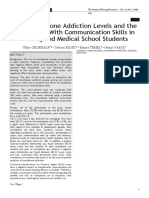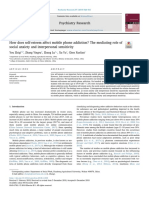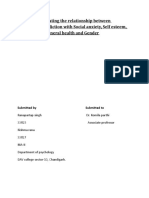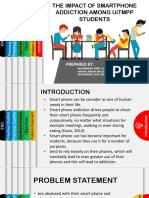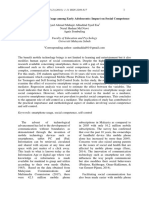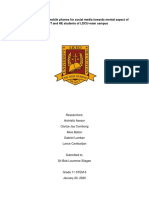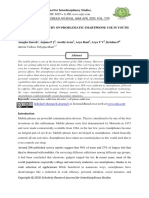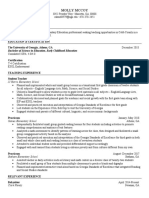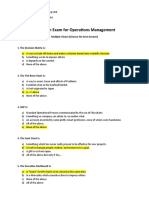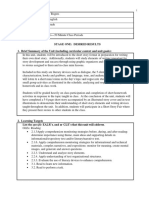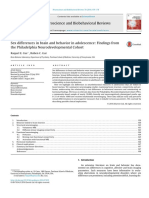0% found this document useful (0 votes)
67 views8 pagesStatistics Group Report
1. The study investigated the effects of smartphone addiction on student self-esteem at UiTM. It aimed to identify addiction levels, compare levels between males and females, and examine the relationship between addiction and self-esteem.
2. On average, students showed moderate addiction levels across survey questions. There was no significant difference in addiction levels between male and female students.
3. There was no significant relationship found between smartphone addiction and self-esteem levels. Students with higher addiction levels did not necessarily have lower self-esteem.
Uploaded by
Aiman RashidiCopyright
© © All Rights Reserved
We take content rights seriously. If you suspect this is your content, claim it here.
Available Formats
Download as PDF, TXT or read online on Scribd
0% found this document useful (0 votes)
67 views8 pagesStatistics Group Report
1. The study investigated the effects of smartphone addiction on student self-esteem at UiTM. It aimed to identify addiction levels, compare levels between males and females, and examine the relationship between addiction and self-esteem.
2. On average, students showed moderate addiction levels across survey questions. There was no significant difference in addiction levels between male and female students.
3. There was no significant relationship found between smartphone addiction and self-esteem levels. Students with higher addiction levels did not necessarily have lower self-esteem.
Uploaded by
Aiman RashidiCopyright
© © All Rights Reserved
We take content rights seriously. If you suspect this is your content, claim it here.
Available Formats
Download as PDF, TXT or read online on Scribd
/ 8


















